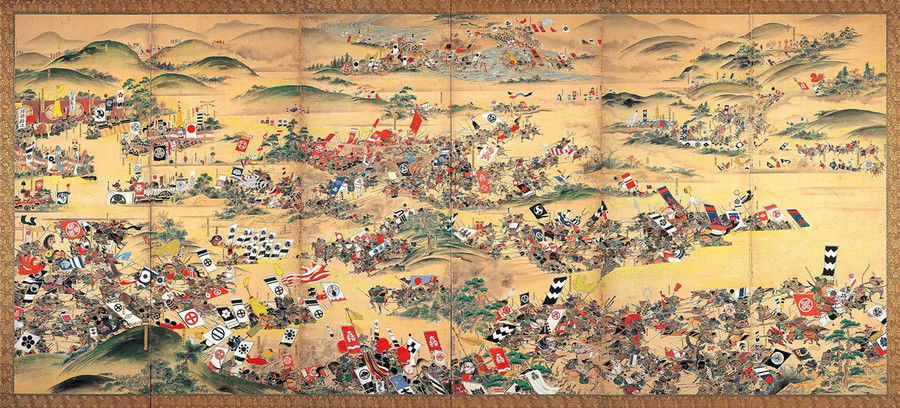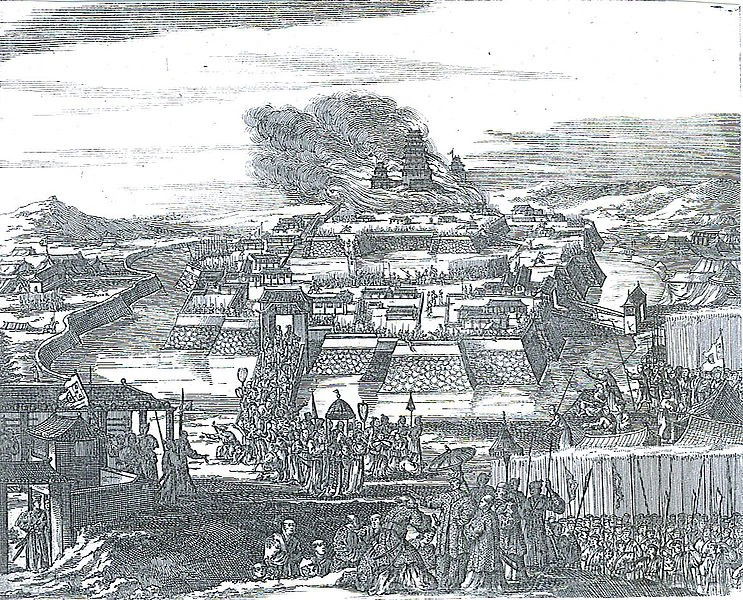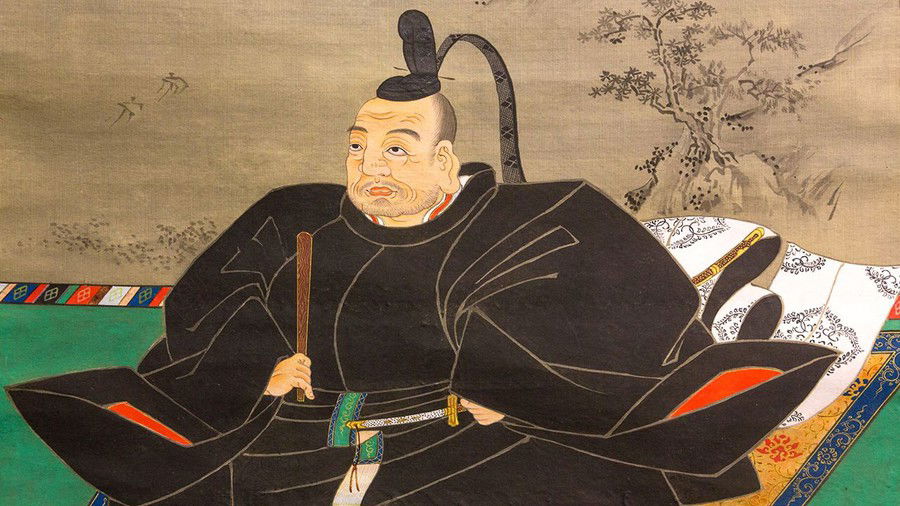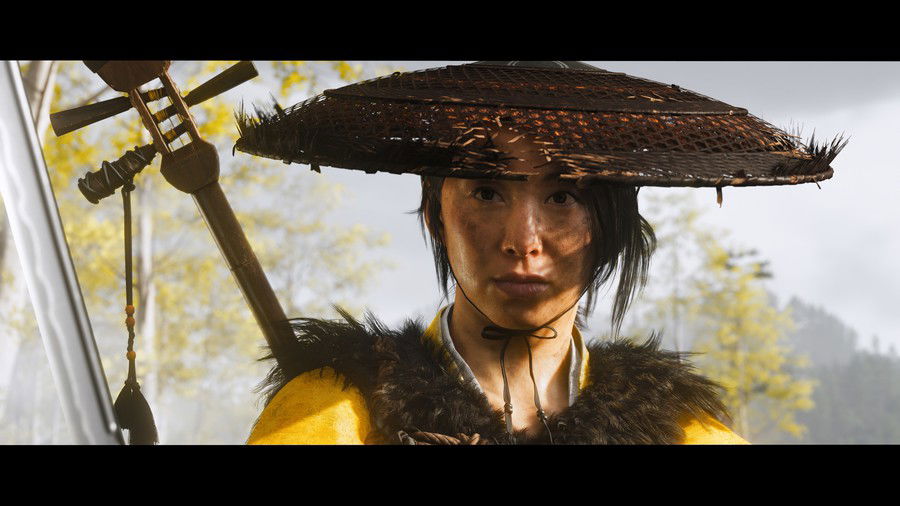The sequel to Ghost of Tsushima has finally been announced - but not as some expected. Instead of a story directly related to the events of the first game, Sony has decided to turn Ghost into an anthology franchise, with each title set in a different period of Japan and featuring new characters.
Ghost of Yōtei will take players to 1603, the beginning of Japan's Edo Period, which lasted for about 250 years. It was a time of substantial change in Japanese society in many areas, and was widely considered peaceful when compared to the years that preceded it.
But Atsu is not at the center of the historical events of this time. She is in another region, isolated and not yet annexed by Japan - Ezo, later renamed as Hokkaido. So what exactly are the problems that the people of that region have faced, and how do they compare to the severity of the invasion of Tsushima Island? Who will be the enemies that Atsu will need to stop?
In this article, we delve into the main events that occurred during the time in which Ghost of Yōtei is set to try to decipher a little more of what we can expect from Sucker Punch's new title!
Japan in the 17th Century - The Beginning of the Edo Period
The Edo Period lasted about 250 years in Japan and brought dozens of changes to the country's politics - from its foreign relations to changes in the social hierarchy and culture of its people. In this article, we will only cover the first three decades of this period, given the low probability that Ghost of Yōtei will cover events very far from its starting year.
The Battle of Sekigahara and the Establishment of the Tokugawa Shogunate

The most significant event of the period in which Ghost of Yōtei is set is the Battle of Sekigahara in 1600. This was one of the most important events in Japanese history, as it cemented the power of Tokugawa Ieyasu. Ieyasu's victory over his rivals established control over Japan and marked the end of the turbulent period known as the Warring States Period, also known as Sengoku Period. Three years after the battle, Ieyasu was named shogun by the emperor, officially founding the Tokugawa Shogunate in 1603.
With the establishment of the shogunate, Tokugawa Ieyasu implemented a series of policies to maintain control over the daimyōs and ensure the stability of the country. The most significant of these was the Sankin-kotai system, or “alternating residence,” which required the daimyōs to spend part of the year in the capital, Edo, and part on their own lands. This not only weakened their regional power by keeping them under surveillance, but also helped to strengthen central authority.
The centralization of power in Edo was a strategic move. Ieyasu moved the capital from Kyoto to Edo, strengthening his control over the nation by transferring the administration and the center of political power. The construction of Edo Castle, which would become a symbol of Tokugawa's power, was essential in establishing the authority of the new dynasty and in developing the city as the political and economic heart of the country.
The daimyōs were required to contribute to the construction and maintenance of Edo, particularly in providing materials for Edo Castle and other public projects. The system was also financially taxing on them, as travel and the maintenance of two residences drained their resources, reducing their ability to challenge Tokugawa power.
The Siege of Osaka
But the shogunate still faced one final threat: the Toyotomi clan, led by Toyotomi Hideyori, son of Hideyoshi, one of the unifiers of Japan. After rumors circulated that Hideyoshi's heir intended to rebel, Ieyasu insisted that the shogunate had been insulted by an inscription on a bell at the temple built by Hideyori. With war looming, Hideyori appealed to the daimyōs for help; when no one responded, he hired thousands of ronin.

The conflict began with a siege in 1614. Ieyasu's troops were unable to penetrate the outer defenses of Osaka Castle, the strongest fortress in Japan. However, after Tokugawa troops fired their cannons near Hideyori's mother's quarters, she convinced her son to negotiate. Ieyasu offered a peaceful solution that allowed Hideyori to retain his possessions and forces. Hideyori agreed, ordering his followers to lay down their arms.
After a grand show of retreat by his armies, Ieyasu ordered the outer moats of Osaka Castle to be filled in, thus weakening the fortress' defenses. Hideyori's commanders tried to clear the ditches, but Ieyasu soon got his armies moving again.
In 1615, with Ieyasu's son, Hidetada, in supreme command, the Tokugawa armies stormed the gates of Osaka Castle and burned it to the ground. As their forces were being massacred, Hideyori and his mother committed seppuku. Ieyasu completed his victory by ordering the execution of Hideyori's infant son. From then on, no other clan would be strong enough to challenge the centralized authority of the shogunate. This event marked the end of any attempt at military resistance to the regime and ensured that the Tokugawa dynasty would reign unchallenged. With the fall of Osaka, Hidetada further strengthened the foundations of his rule. The siege also served as a stark reminder to the other daimyōs that any challenge to centralized power would be ruthlessly crushed, reinforcing the policy of tight control over regional clans.
Isolationism and Shogunate Succession

Ieyasu's third son, Hidetada, a military general who had fought in the sieges of Osaka Castle and the skirmishes that led to the Battle of Sekigahara, was officially named shogun in 1605, securing the succession in the Tokugawa family at a time when the Emperor of Japan had not fully recognized dynastic claims.
In the years after his son's appointment as successor, Ieyasu would continue to keep a tight rein on politics. Fearing that the growth and expansion of Christianity in Japan would take away the loyalty of the daimyōs, he issued decrees against the religion in 1606, which eventually culminated in the expulsion of Christian missionaries four years later. In 1614, Ieyasu issued an edict banning the practice of Christianity in the country, and Christian communities that remained in secret faced severe punishments, and many converts were forced to renounce their faith publicly.
Ieyasu died in 1616 due to a stomach illness, but he secured the Tokugawa hegemony in power. Hidetada was shogun for 12 years and his son, Iemitsu, became shogun in 1623 and ruled Japan for 28 years.
Isolationism was not limited to religion alone. Under the rule of Tokugawa Iemitsu, Ieyasu’s grandson, Japan adopted a policy of near-total isolationism in the 1630s. The country closed its doors to most foreign nations, allowing trade only with the Dutch and the Chinese, who operated under strict regulations at the port of Nagasaki.
This policy had a lasting impact on Japan’s history. Although the country had limited access to foreign goods, isolation allowed Japan to develop its culture and economy relatively autonomously, without interference from the European colonial powers that dominated other parts of Asia at the time.
Between 1633 and 1639, Iemitsu implemented a stricter policy of isolationism that not only restricted Christian activities, but also limited foreign trade to two partners: China and the Netherlands. These traders operated exclusively out of the port of Nagasaki, under the strict supervision of the Tokugawa government. Its purpose was to maintain social and political control by preventing the spread of ideas and technologies that could destabilize the regime.
Trade with the Netherlands, for example, was tolerated because the Dutch, unlike the Spanish and Portuguese, did not attempt to convert the Japanese to Christianity—the artificial island of Dejima in Nagasaki was built to isolate foreign traders from the rest of the population.
The impact of isolationism was profound. Although Japan was protected from outside influences and colonial pressures, it also lagged certain technological and scientific advances that were occurring in the West. However, isolation allowed Japan to maintain internal stability and develop a rich and autonomous culture during the Edo period, with the arts such as kabuki theater, literature, and ukiyō-e painting flourishing.
Samurai and the Social Hierarchy
With the end of major military conflicts, the samurai, who had previously played an essential role in wars, had to adapt to a new reality. With no wars to fight, they began to act as administrators and bureaucrats, also dedicating themselves to the study of arts and philosophy. Confucianism strongly influenced this transition, leading the samurai to value education, ethics and ceremony. In addition, the samurai began to practice and develop arts such as the tea ceremony, calligraphy and the study of martial arts as a form of personal discipline.
Confucianism, especially Neo-Confucianism, became the ideological basis of Japanese society. The Confucian system reinforced a rigid social hierarchy, divided into four main classes: samurai, peasants, artisans and merchants.
The Tokugawa government used this structure to ensure order and stability throughout the country. The samurai, although a military class, became the bureaucratic elite during the Edo period, serving as local administrators and rulers. They were the upholders of morality and discipline, promoting the Confucian values of loyalty, respect for hierarchy, and duty to the state. Above all was the shogun, who ruled in the name of the emperor, and whose position was largely symbolic.
Below the samurai, the peasants formed the base of the social pyramid, being responsible for food production and thus essential to the economy. Craftsmen and merchants, although economically prosperous, occupied the lowest rungs of the hierarchy. Mobility between them was virtually impossible. This helped ensure that the shogunate maintained control over society while preventing revolts and instability.
Minor Conflicts and the Shimabara Rebellion
Although the Tokugawa Shogunate had ensured peace throughout most of the country, some regions still experienced rebellion and discontent, with small local uprisings occurring in response to the social and political changes imposed by the regime, such as the demand for absolute loyalty.
One of the most notable was the Shimabara Rebellion, which occurred in 1637–1638, considered the most violent of the Edo period. The rebellion began when Matsukura Katsuie, the daimyō of Shimabara Domain, imposed unpopular policies that drastically increased taxes to build the new Shimabara Castle and violently banned Christianity. In December 1637, an alliance of local ronin and mainly Catholic peasants led by Amakusa Shirō rebelled against the Tokugawa shogunate out of discontent with Katsuie's policies.
The Tokugawa shogunate sent a force of over 125,000 soldiers to suppress the rebels, who defeated them after a long siege of their stronghold at Hara Castle.
The Ainu - How Ghost of Yōtei might fit in
From a first look at the trailer, it's difficult to tell how these events might intertwine with the new Ghost game. But Atsu, the new protagonist, isn't in the center of Edo and may not even participate in these events.

Set in the region of Hokkaido, called Ezo at the time, its plot may be connected to events that occurred before the shogunate when, at the end of the 16th century, one of the three unifiers of Japan, Hideyoshi Tomotomi, hired the Matsumae clan to take over the island of Hokkaido, which led to the massacre of the native peoples of the northern regions of Japan, the Ainu. The first war between the Ainu and the clan would not occur until six decades after the year in which Ghost of Yōtei takes place, so it is likely that we will see Atsu deal with the minor conflicts and the beginning of what would later become the Shakushain Rebellion, in 1669.
The Shogunate would grant the Matsumae clan exclusive rights to trade with the Ainu people in 1604, beginning a 200-year process until the colonization of Hokkaido. According to historian Itsuji Tangiku on Twitter, the name Ghost of Yōtei may indicate, for example, a satire on Japanese colonialism against the Ainu people, since the name Yõtei was only given to the mountain that seems to be at the heart of the narrative many centuries after the events of the game - Japan only recognized the Ainu people as indigenous to Hokkaido in 2008 with a unanimous vote of its parliament at the time, but this was only made official in 2019.
Ghost of Tsushima took a historical event (the Mongol invasion of Tsushima Island) and created its own fictional interpretation of it, both in narrative details and in worldbuilding. It is very likely that the new game will take the arrival of the Matsumae clan to Hokkaido to make its own story - one that does not need and probably will not follow all the historical details of that time, just using them as a backstage.

Jin Sakai was a character whose journey was inspired by the two typhoons that hit the Island during the invasion, being a metaphorical personification of this force of nature in the narrative - Atsu, whose trailer and promotional images demonstrate her connection to Mount Yōtei, may be inspired by some folklore legend around the Hokkaido region and/or an interpretation of the mountain as a “protector” of the people.

This brings us to the creature seen in the trailers alongside the protagonist: the Hokkaido Wolf is a species that lived in the region until they were hunted to extinction during the Meiji era. In some regions, the Ainu revered this species as a deity from one of their legends - Horkew Kamuy - a white wolf that gave rise to the ancestors of the Ainu people after mating with a goddess.
This respect created a close relationship between them and the wolves, where they would leave part of their prey as offerings to them, in addition to being forbidden from hunting them with firearms or poison, in addition to it being common for some of them to try to cross their dogs with wolves to create a hybrid species.
The beast we see with Atsu could easily be one of these hybrid breeds and serve as her guide around the island - a corporeal and metaphorical personification of the Horkew Kamuy that serves her in the same way that the wind served Jin and the players.
But it is still necessary to explain how an Ainu can achieve such mastery with the sword and with the subterfuge devices used by the Ghost, that must be inherited by her during the plot to maintain the gameplay aspects that popularized the previous game.
It is important to emphasize that the Tokugawa Shogunate had its alliances with the Iga and Kōka clans, who offered their services during Ieyasu's campaigns to unite Japan under his authority and were rewarded with privileged positions in the guard, on farms and with lands in the surroundings of Edo. The clans also participated in the army sent to contain the Shimabara Rebellion, while the Iga were present at the Siege of Osaka and carried out sabotage and espionage missions since the beginning of the shogunate, in addition to being part of the internal guard of Edo Castle while the Kōka were responsible for the city's police.
Perhaps, for some reason that makes sense in the narrative, she meets or encounters someone from one of these clans who follow the Matsumae but does not agree with their plans, or who was already living in Hokkaido after the Battle of Sekigahara. Or, in another even more unlikely scenario, it is possible that her abilities and knowledge of them - in addition to her mask - precede the events and indirectly connect her to Jin in some way.
Conclusion
There is still much to be revealed about Ghost of Yōtei and the new protagonist, Aino. In particular, the idea of turning the series into a multimedia entertainment franchise seems a bit too ambitious for a title that only had a single game, but the direction of the series to consider other historical periods of Japan with new protagonists is a good way to keep things fresh, give players more reasons to follow the stories of each title while also offering a means to create worlds as interactive and visually magnificent as the one in Ghost of Tsushima.
Thanks for reading!













— Comentários 0
, Reações 1
Seja o primeiro a comentar